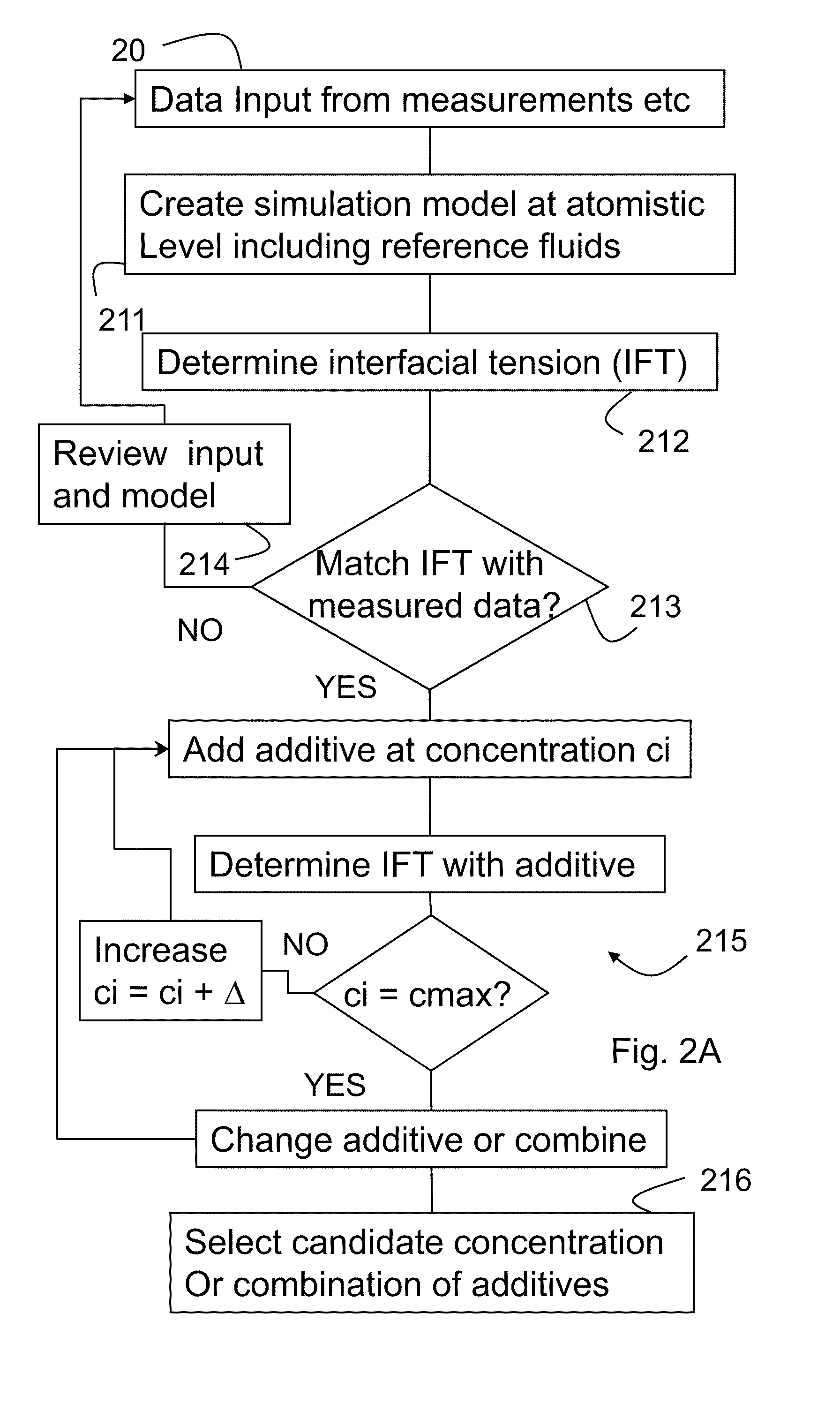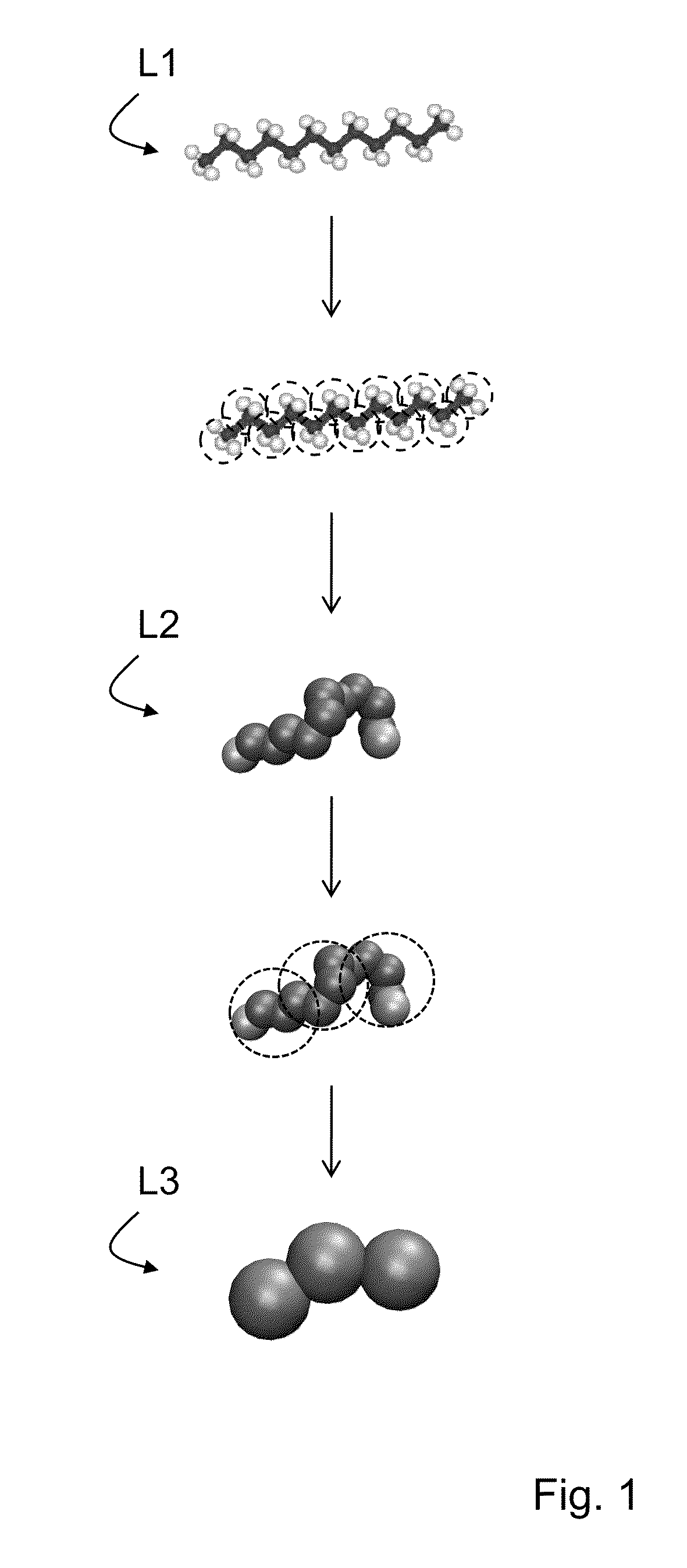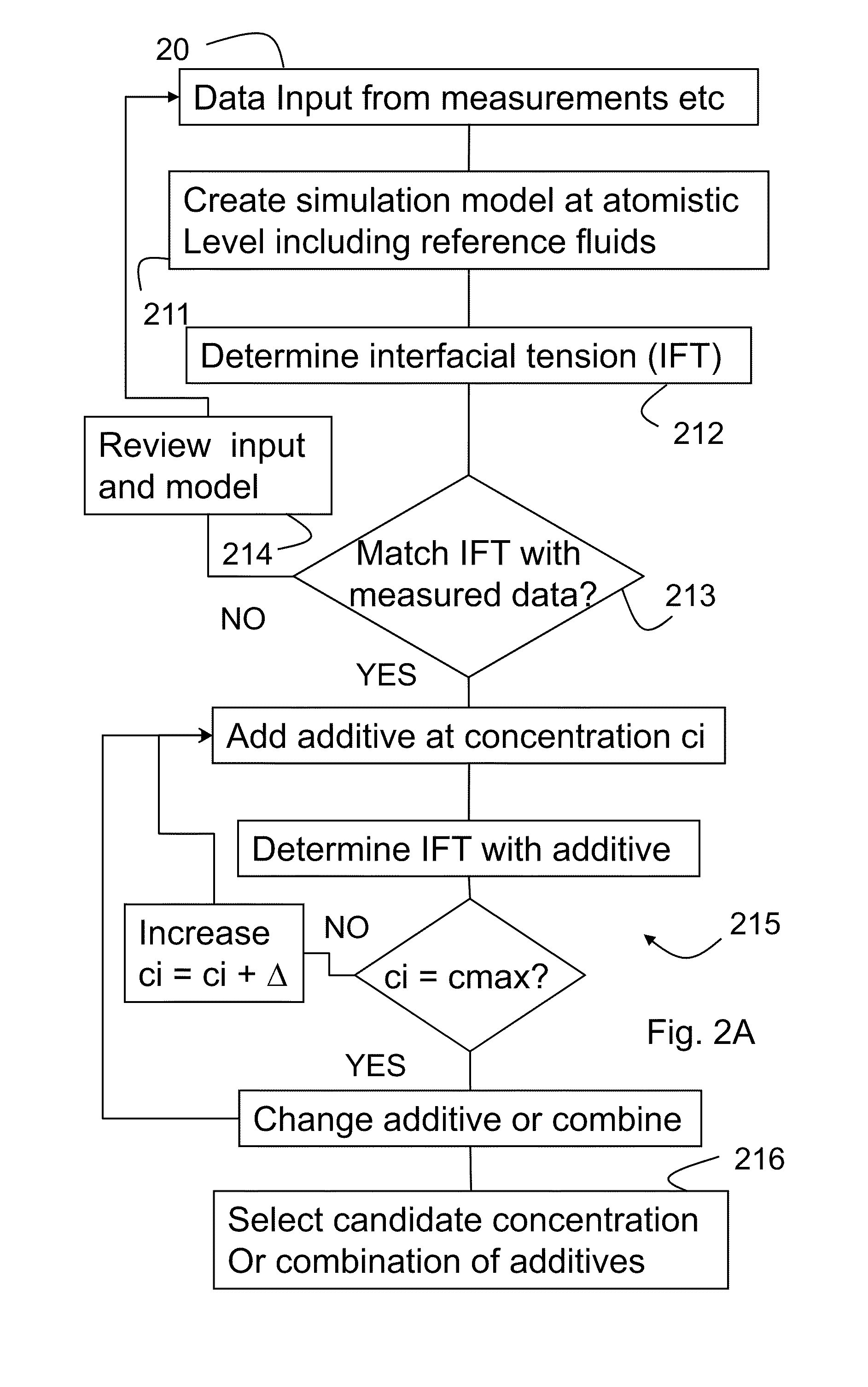Method of selecting additives for oil recovery
a technology of additives and oil, applied in the direction of instruments, chemical property prediction, borehole/well accessories, etc., can solve the problem of poor displacement efficiency of water flood by itself, and achieve the effect of improving recovery
- Summary
- Abstract
- Description
- Claims
- Application Information
AI Technical Summary
Benefits of technology
Problems solved by technology
Method used
Image
Examples
Embodiment Construction
[0055]In the following example of the invention a method is described aimed at analyzing directly the effect of chemical additives in water injected into oil reservoir to move the oil out from porous rock. It is well known that the interfacial tension between oil and brine and the relative adherence of oil or water to the rocks (wettability) can be modified with specific chemical additives such as surfactants. However since rock, oil and brine differ from one reservoir to another and from one layer to the other in each reservoir, it is regarded as a difficult problem to identify a suitable chemical additive and to determine its minimal concentration to lower the rock wettability to oil and to reduce the oil / brine interfacial tension. In this example of the invention this problem is addressed using a staged process based on Molecular Dynamics modeling.
[0056]An example of a component or constituent element of the system represented at three different molecular stages or levels is show...
PUM
 Login to View More
Login to View More Abstract
Description
Claims
Application Information
 Login to View More
Login to View More - R&D
- Intellectual Property
- Life Sciences
- Materials
- Tech Scout
- Unparalleled Data Quality
- Higher Quality Content
- 60% Fewer Hallucinations
Browse by: Latest US Patents, China's latest patents, Technical Efficacy Thesaurus, Application Domain, Technology Topic, Popular Technical Reports.
© 2025 PatSnap. All rights reserved.Legal|Privacy policy|Modern Slavery Act Transparency Statement|Sitemap|About US| Contact US: help@patsnap.com



